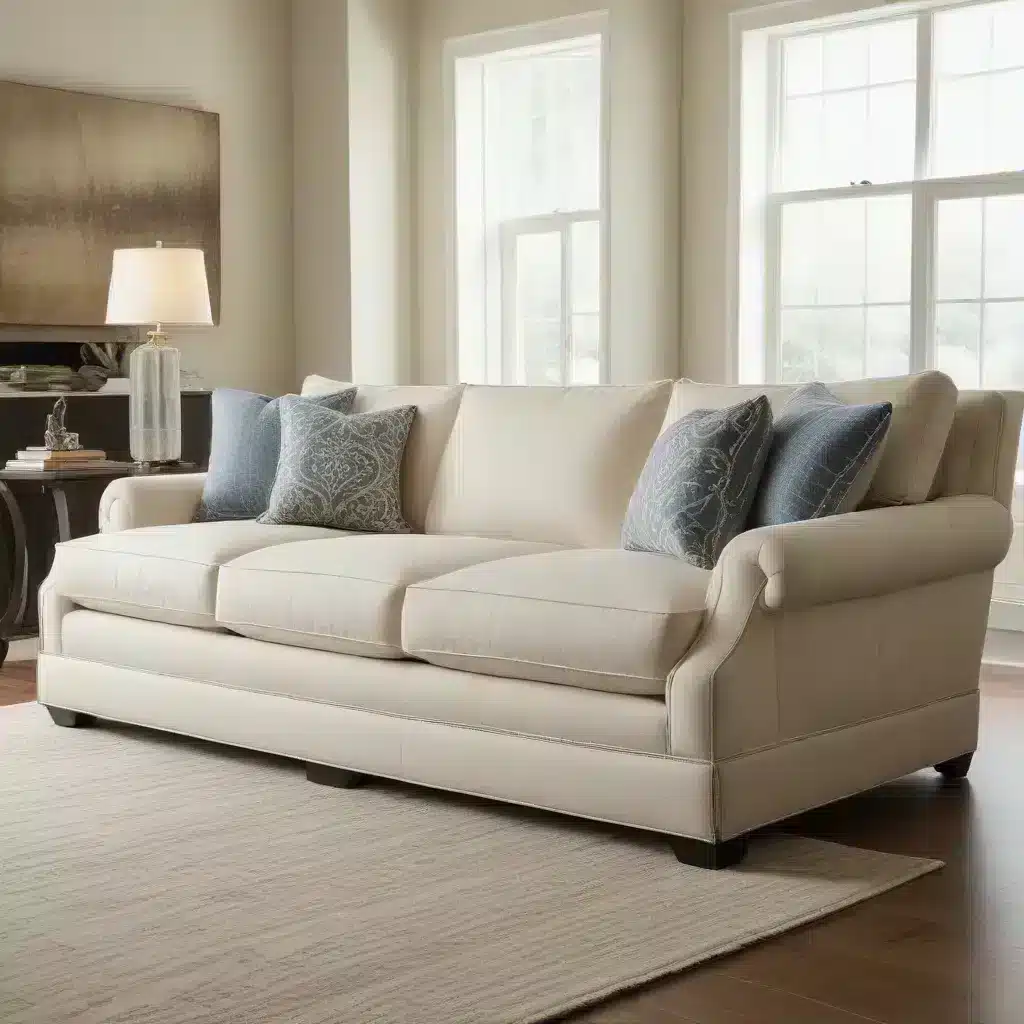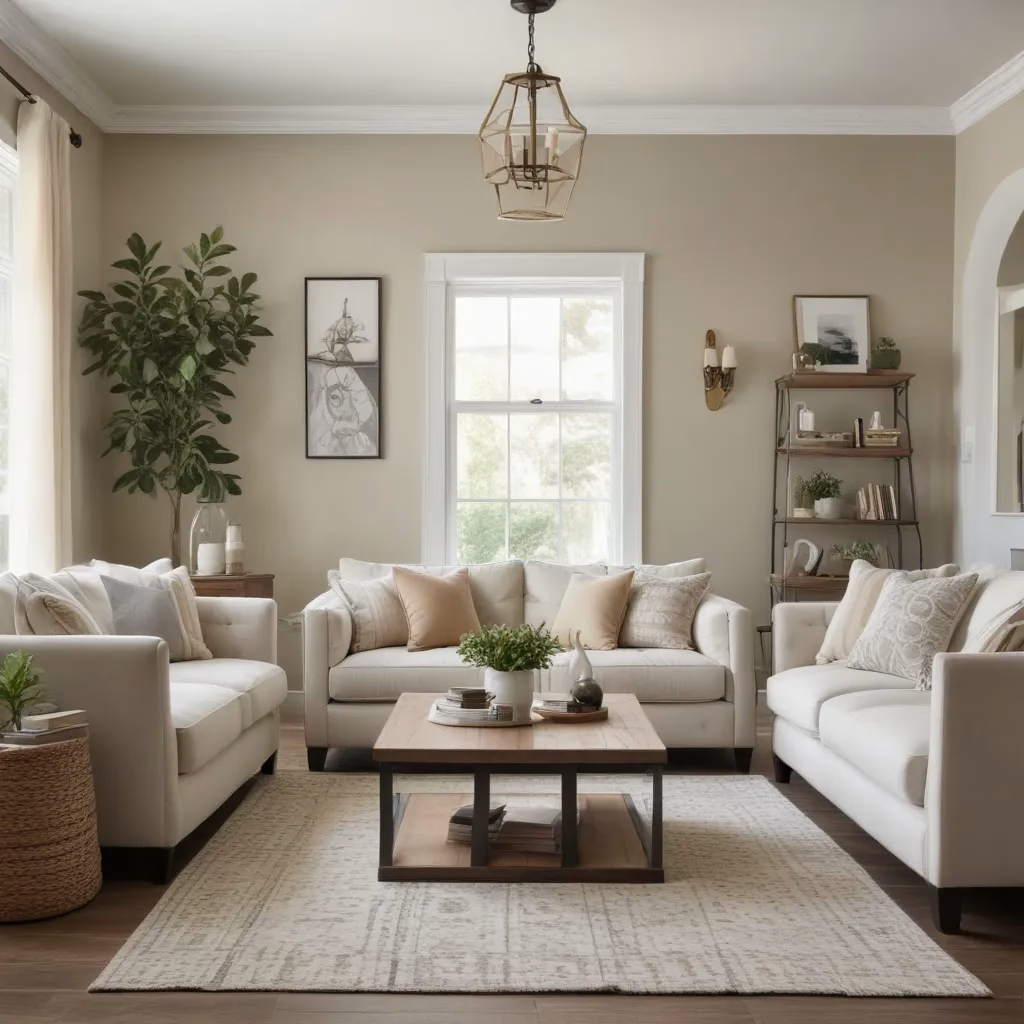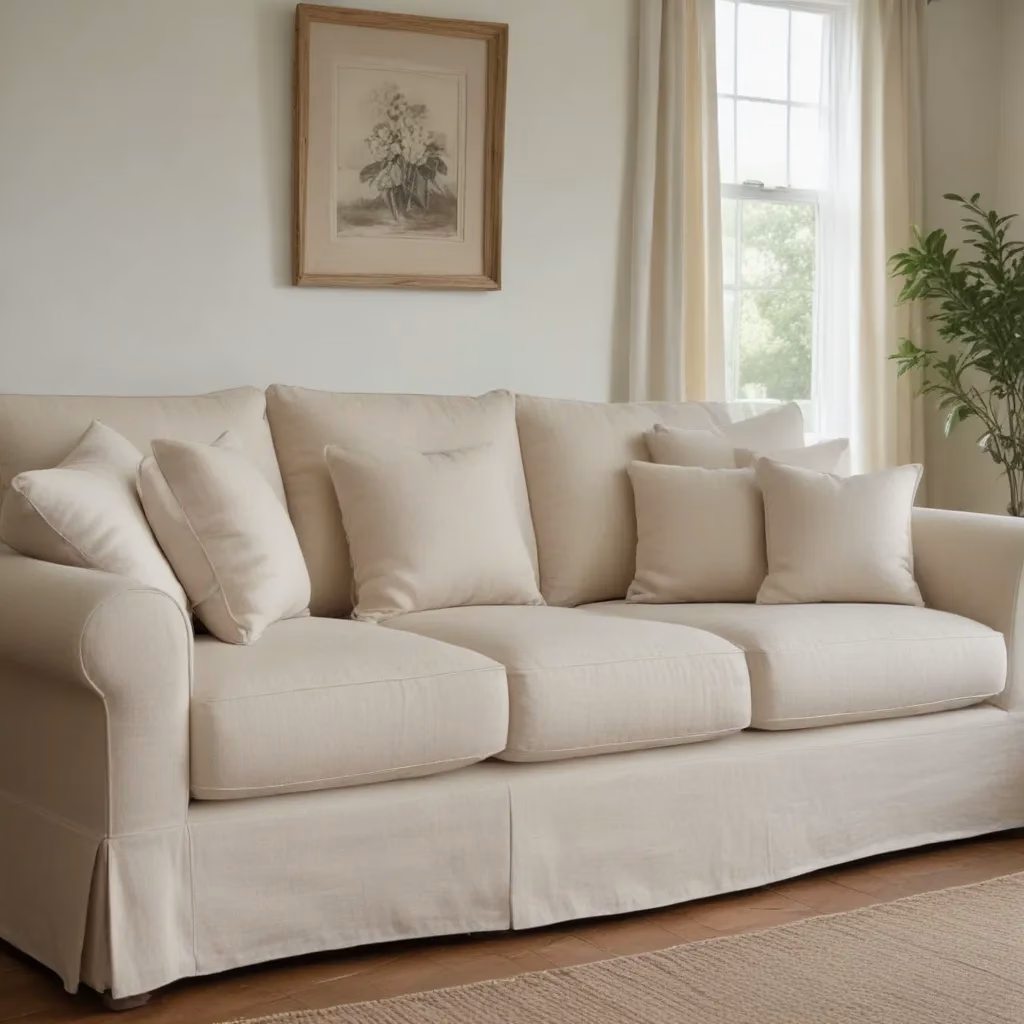
The Art of Personalized Sofa Creation
As a furniture specialist with years of experience, I’ve seen firsthand how a well-crafted sofa can transform a living space. Custom sofas offer a level of personalization that off-the-shelf options simply can’t match. When you choose to design your own sofa, you’re not just buying furniture; you’re creating a centerpiece that reflects your unique style and meets your specific needs.
The process of crafting a custom sofa is both exciting and rewarding. It begins with understanding your vision and lifestyle. Do you need a cozy nook for reading? A spacious sectional for family movie nights? Or perhaps a sleek, modern piece to complement your minimalist decor? Whatever your preference, a custom sofa can be tailored to fit.
One of the most significant advantages of custom sofas is the ability to control every aspect of the design. From the frame construction to the cushion density, and from the fabric choice to the finishing details, each element can be fine-tuned to your liking. This level of customization ensures that your sofa not only looks perfect in your space but also provides the exact comfort and functionality you desire.
Selecting the Perfect Fabric for Your Lifestyle
Choosing the right fabric for your custom sofa is crucial. It’s not just about aesthetics; it’s about finding a material that can withstand your daily life. As someone who’s guided countless clients through this process, I always start by asking about their lifestyle.
For families with young children or pets, performance fabrics are a game-changer. These innovative materials are designed to resist stains, repel liquids, and stand up to wear and tear. They come in a wide range of colors and textures, so you don’t have to sacrifice style for practicality. I’ve seen performance fabrics save sofas from juice spills, muddy paw prints, and even red wine disasters.
On the other hand, if you’re looking for luxury and elegance, natural fibers like linen or velvet might be more your speed. These fabrics add a touch of sophistication to any room. Linen, with its casual elegance, works beautifully in a relaxed living room or a coastal-inspired space. Velvet, with its rich texture, can make a bold statement in a formal sitting area or a chic apartment.
Remember, the fabric you choose will impact not only the look of your sofa but also its longevity and maintenance requirements. It’s worth taking the time to consider all your options and even request samples to see and feel the fabrics in your own home.
Customizing Comfort: From Cushions to Configurations
When it comes to comfort, one size definitely does not fit all. That’s why customizing the cushions and overall configuration of your sofa is so important. In my experience, the right combination can make the difference between a sofa that’s merely nice to look at and one that becomes your favorite spot in the house.
Let’s talk about cushion firmness. Some people prefer a soft, sink-in feel, while others need more support. I’ve worked with clients who have specific health needs, like back problems, that require a firmer seat. Custom sofas allow you to choose the density of the foam used in your cushions, or even combine different densities for the perfect balance of comfort and support.
The configuration of your sofa is another area where customization shines. L-shaped sectionals, chaise lounges, or traditional three-seaters – the choice is yours. I once helped a client design a modular sofa that could be rearranged to accommodate their frequent hosting duties. It was a hit at their parties and provided versatility they never knew they needed.
Don’t forget about the details that can enhance comfort. Adjustable headrests, built-in recliners, or even hidden storage compartments can all be incorporated into your custom design. These features can significantly improve your sofa’s functionality and your overall enjoyment of the piece.
The Role of Dimensions in Custom Sofa Design
Getting the dimensions right is critical when designing a custom sofa. I’ve seen beautifully crafted pieces that looked out of place simply because they weren’t the right size for the room. Here’s where the expertise of a furniture specialist can really make a difference.
First, consider the scale of your room. A large sectional might be your dream, but if it overwhelms your space, it won’t be the haven you imagined. Conversely, a small loveseat in a spacious living room can look lost and uninviting. I always recommend measuring your space carefully and using painter’s tape on the floor to outline the proposed sofa dimensions. This simple trick can give you a real sense of how the piece will fit.
Don’t forget about the human factor when considering dimensions. The depth of the seat, the height of the back, and even the angle of recline can all be customized to fit your body and preferences. I once worked with a tall client who had always found standard sofas uncomfortable. We designed a piece with a deeper seat and higher back that finally gave him the comfort he’d been missing.
Remember to think about practicality too. Will the sofa fit through doorways and around tight corners? Can it be delivered in sections and assembled on-site if needed? These are all factors that a good custom sofa designer will consider to ensure your perfect piece actually makes it into your home.
The Frame: The Foundation of a Quality Sofa
While fabric and cushions often get the most attention, the frame is truly the backbone of any quality sofa. In my years of experience, I’ve learned that a well-constructed frame can mean the difference between a sofa that lasts for decades and one that needs replacing after just a few years.
Hardwood frames, particularly those made from kiln-dried oak, maple, or beech, are often considered the gold standard. These woods are less likely to warp or crack over time, providing a stable foundation for your sofa. I’ve seen sofas with hardwood frames that have remained sturdy and supportive for over 20 years, even with daily use.
The construction method is just as important as the material. Joints should be reinforced with corner blocks, and high-stress areas need extra support. Look for frames that use dowels, screws, and glue rather than just staples. These methods create a more durable structure that can withstand the rigors of daily life.
For those concerned about sustainability, there are eco-friendly options available. Reclaimed wood or sustainably harvested timber can be used to create beautiful, durable frames. I’ve worked with clients who were thrilled to learn their custom sofa could be both comfortable and environmentally responsible.
Finishing Touches: Elevating Your Custom Sofa
The beauty of a custom sofa lies in the details. These finishing touches can turn a nice piece of furniture into a true work of art that reflects your personal style. Let’s explore some of the ways you can add that extra flair to your sofa design.
Decorative piping or welting along the edges of cushions and arms can provide a crisp, tailored look. I’ve seen contrasting piping used to great effect, adding a pop of color or tying the sofa into the room’s color scheme. For a more modern look, some clients opt for a clean, piping-free design with precise seams.
The legs of your sofa can make a significant style statement. From sleek metal hairpin legs for a mid-century modern vibe to turned wooden legs for a traditional feel, the options are vast. I once worked with a client who chose hand-carved wooden legs that matched an heirloom coffee table, creating a beautifully cohesive look in their living room.
Throw pillows are another way to personalize your sofa. With a custom piece, you can have pillows made in coordinating or contrasting fabrics. I always encourage clients to think beyond just matching pillows – mixing textures and patterns can add depth and interest to your sofa and the entire room.
Don’t overlook functional details either. USB ports built into the arms or sides of the sofa are becoming increasingly popular. I’ve also designed sofas with hidden storage compartments in the arms or under the seats, perfect for keeping living spaces tidy.
Maintenance and Care for Your Custom Sofa
Investing in a custom sofa means you’ll want to keep it looking its best for years to come. Proper maintenance is key to preserving both the appearance and functionality of your piece. Let me share some tips I’ve gathered over the years.
Regular vacuuming is essential, regardless of your sofa’s fabric. Use the upholstery attachment and go over the entire sofa, including under the cushions, at least once a week. This prevents dirt and debris from settling into the fabric and causing wear over time.
For spills, quick action is crucial. Blot (don’t rub!) the spill immediately with a clean, white cloth. For water-based spills on most fabrics, a mixture of mild soap and water can be effective. However, always check the care instructions for your specific fabric first. I’ve seen too many sofas damaged by well-intentioned cleaning attempts.
Rotating and flipping cushions regularly helps maintain even wear. This is especially important for sofas that get heavy use in certain areas, like the spot in front of the TV. I recommend doing this monthly for high-traffic sofas.
If your custom sofa has leather upholstery, it requires different care. Dust regularly with a soft, dry cloth and use a leather conditioner every 6-12 months to keep the leather supple and prevent cracking.
Remember, professional cleaning every 12-18 months can go a long way in extending the life of your sofa. Many of my clients have found that this regular maintenance keeps their custom piece looking fresh and new for many years.
The Process of Creating Your Custom Sofa
Creating a custom sofa is an exciting journey, and as someone who’s guided many clients through this process, I can tell you it’s incredibly rewarding. Let’s walk through what you can expect when you decide to design your own piece.
The process typically begins with a consultation. This is where you’ll discuss your vision, lifestyle needs, and any specific requirements you have for your sofa. It’s helpful to bring inspiration images, fabric swatches you like, and measurements of your space to this initial meeting.
Next comes the design phase. Based on your input, a designer will create a concept for your sofa. This usually includes sketches or 3D renderings that give you a clear idea of how the final piece will look. Don’t be afraid to ask for adjustments at this stage – it’s all part of the process of creating your perfect sofa.
Once the design is finalized, you’ll select your fabric and any additional features or details. This is where you can really make the sofa your own. I always encourage clients to take their time with this step and to consider how the fabric will work with their lifestyle as well as their decor.
The production phase comes next. Depending on the complexity of the design and the materials chosen, this can take anywhere from a few weeks to a couple of months. During this time, skilled craftsmen will build your sofa from the ground up, paying attention to every detail.
Finally, there’s delivery and placement. A good custom furniture company will work with you to ensure the sofa is delivered safely and positioned exactly where you want it in your home. This is the moment when you see your vision come to life, and it’s always a thrill.
Why Choose a Custom Sofa?
After years in the furniture industry, I’ve come to appreciate the unique benefits that custom sofas offer. While it’s true that you can find many beautiful ready-made sofas, there’s something special about a piece that’s been crafted just for you.
Firstly, a custom sofa allows you to create a piece that fits your space perfectly. No more compromising on size or shape – your sofa can be designed to maximize your room’s potential. I’ve worked with clients who had awkward corners or unique room layouts, and a custom sofa was the perfect solution.
Secondly, you have complete control over the style. Whether you’re looking for something ultra-modern, classically traditional, or anywhere in between, a custom sofa can be designed to match your aesthetic perfectly. This level of personalization extends to every aspect of the sofa, from the overall shape to the smallest details.
Comfort is another major advantage. With a custom sofa, you can choose the exact level of firmness in the cushions, the depth of the seat, and even the height of the back. This means your sofa will be comfortable for you and your family, not just the average person.
Lastly, a custom sofa is often a higher quality piece of furniture. Because it’s made to order, more attention is paid to the construction and materials. Many of my clients have found that their custom sofas outlast ready-made options, making them a smart long-term investment.
While a custom sofa may require a larger upfront investment, the benefits in terms of fit, style, comfort, and longevity often make it worthwhile. It’s not just a piece of furniture; it’s a reflection of your personal style and a centerpiece of your home that you’ll enjoy for years to come.
For more information on creating your perfect custom sofa, visit Sofa Spectacular. Their team of experts can guide you through the process and help bring your vision to life.



